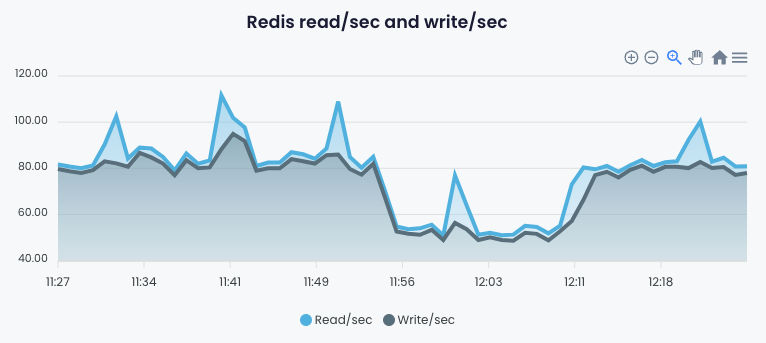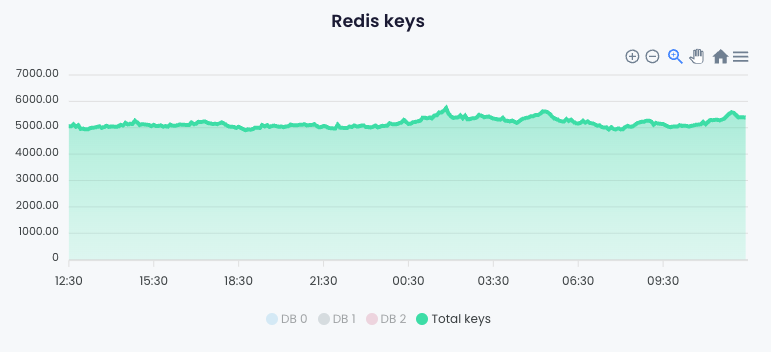
KeyDB Monitoring: Enhancing Performance on Linux and Windows Servers
KeyDB, the robust in-memory data store, serves as a cornerstone for a myriad of applications, ranging from e-commerce platforms to real-time analytics systems. To optimize KeyDB’s performance and guarantee the seamless operation of your applications, it is imperative to implement comprehensive monitoring and efficient resource management. Xitoring presents the optimal solution for achieving this on both Linux and Windows environments.


KeyDB Server Performance Metrics
Monitoring KeyDB involves tracking essential performance metrics. Here are the key ones:
- Memory Usage: KeyDB stores data in memory. Keeping an eye on memory consumption is paramount to prevent server crashes and slowdowns.
- Latency: Low-latency is a hallmark of KeyDB. Monitor latency to ensure optimal response times.
- Throughput: KeyDB is all about speed. Measure the number of operations per second to maintain peak throughput.
- Connections: Keep an eye on the number of clients connected to KeyDB, ensuring it doesn’t exceed safe limits.
- Persistence: KeyDB can be configured to persist data to disk. Monitor this process to ensure data integrity.
- CPU Usage: High CPU usage can slow down KeyDB. Monitoring this metric is crucial.
- Replication and Clustering: If using replication or clustering, ensure they are functioning as expected.
KeyDB Monitoring: The Xitoring Advantage
All-in-One Monitoring Solution for Linux and Windows Servers
When it comes to KeyDB monitoring, Xitoring stands out as an all-in-one solution, perfectly tailored for both Linux and Windows servers.
- Real-time Monitoring: Keep a close eye on KeyDB performance metrics and receive instant alerts.
- Security: Ensure your KeyDB server is protected with robust security features.
- Windows Compatibility: Xitoring is fully compatible with Windows servers, making it a versatile choice.
- User-Friendly Interface: The intuitive dashboard makes monitoring and management a breeze.
Xitoring – Your KeyDB server’s best friend!

How to start monitoring your KeyDB?
- 1
Install Xitogent
Easily run one command and install Xitogent on your Linux or Windows server
- 2
Enable Integration
Now run `xitogent integrate` on your server and select KeyDB, It will ask for your IP:port and credentials to proceed
- 3
Configure Triggers
You can easily configure several triggers and alerts and receive them in your favorite notification channel.
Get started with Xitoring KeyDB Monitoring today
FAQ
What is KeyDB, and why is monitoring important for it?
KeyDB is a high-speed alternative for Redis with in-memory data store and monitoring is essential to maintain its optimal performance, prevent crashes, and ensure data security
What are the key metrics to monitor in KeyDB?
Important metrics include memory usage, latency, throughput, connections, persistence, CPU usage, and replication status.
How does Xitoring simplify KeyDB monitoring?
Xitoring offers real-time monitoring, security features, Windows compatibility, and an intuitive interface, making it an all-in-one solution for KeyDB monitoring on both platforms.
How long does it take to setup KeyDB monitoring?
If you have Xitogent running on your server on average it would take two minutes to configure and make everything running!
More technical details can be found here: How to monitor KeyDB on Xitoring
What kind of alerts do I get for KeyDB monitoring?
There are many options to configure your customized triggers and alerts, including
- Connected clients
- Rejected conns
- Read per second
- Write per second
- Used memory
- Used CPU
- Total keys
Need Help or Quote?
Have questions or need assistance? Our dedicated support team is here to help. Reach out to us anytime, and we’ll be happy to assist you.

